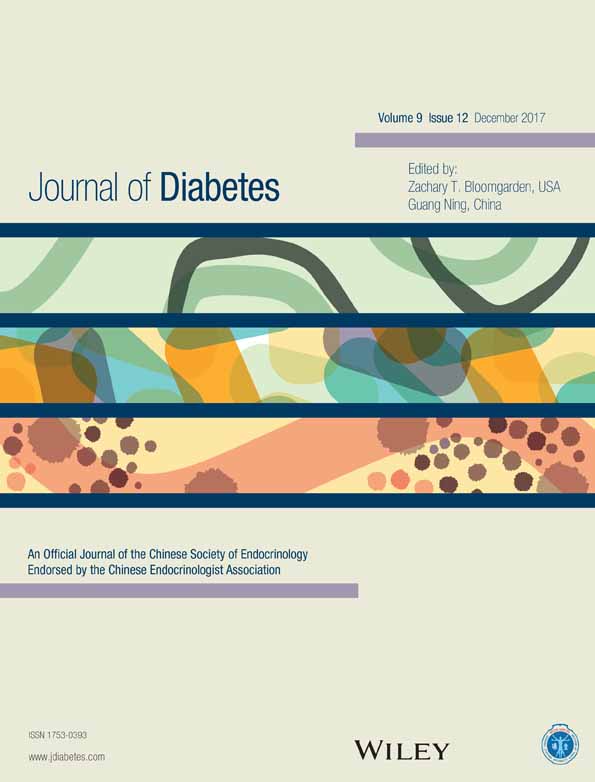Factors of primary and secondary sulfonylurea failure in type 2 diabetic subjects
2型糖尿病患者原发性和继发性磺脲类药物失效的预测因素
Abstract
enBackground
The aim of the present study was to investigate the value of clinical characteristics in predicting sulfonylurea (SU) treatment responses.
Methods
All 747 subjects in the present study were from the Xiaoke Pill Clinical Trial evaluating the safety and efficacy of SU. Subjects had the same initial dose of glibenclamide and drug doses were adjusted every 4 weeks during the 48-week follow-up period. Primary SU failure was defined as a <10% reduction in fasting plasma glucose (FPG) at the end of Week 4 from randomization, whereas secondary SU failure was defined as a consecutive confirmed level of FPG >7 mmol/L.
Results
Kaplan–Meier survival analysis revealed that lower baseline basal disposition index (DI b) and higher FPG predict secondary SU failure. Inversely, higher baseline DI b and lower FPG predict primary SU failure. Primary SU failure can predict secondary SU failure. The combination of lower baseline DI b with primary SU failure is a better predictor of secondary SU failure than lower baseline DI b or primary SU failure alone.
Conclusions
Patients with good glycemic control and higher β-cell reserve at entry are more likely to experience primary SU failure but are less likely to experience secondary SU failure. By combining baseline DI b with initial response at the first month of treatment, we can get quick information about the long-term efficacy of SU treatment.
摘要
zh背景
本研究的目的是调查预测磺脲类药物治疗反应的临床特征的价值。
方法
本研究纳入的747名患者来自消渴丸临床试验(Xiaoke Pill Clinical Trial), 评估了磺脲类药物的安全性和疗效。患者使用的格列本脲起始剂量相同, 在为期48周的随访期间每4周调整一次药物剂量。原发性失效定义为随机分组后的第4周末空腹血糖的降低小于10%, 继发性失效定义为重复确认的空腹血糖 > 7 mmol/L。
结果
Kaplan–Meier生存分析显示基线时较低的基础处置指数(basal disposition index, DIb)和较高的空腹血糖可预测继发性失效。与此相反, 基线时较高的DIb和较低的空腹血糖可预测原发性失效。原发性失效可预测继发性失效。基线时较低的DIb联合原发性失效与单独的两者相比可以更好地预测继发性失效。
结论
在研究开始时患者的血糖控制较好以及β细胞储备较高则发生原发性磺脲类药物失效的可能性较高, 但发生继发性失效的可能性较低。将基线DIb与磺脲类药物治疗一个月后的初始反应相结合, 可以快速得知磺脲类药物长期疗效的信息。




